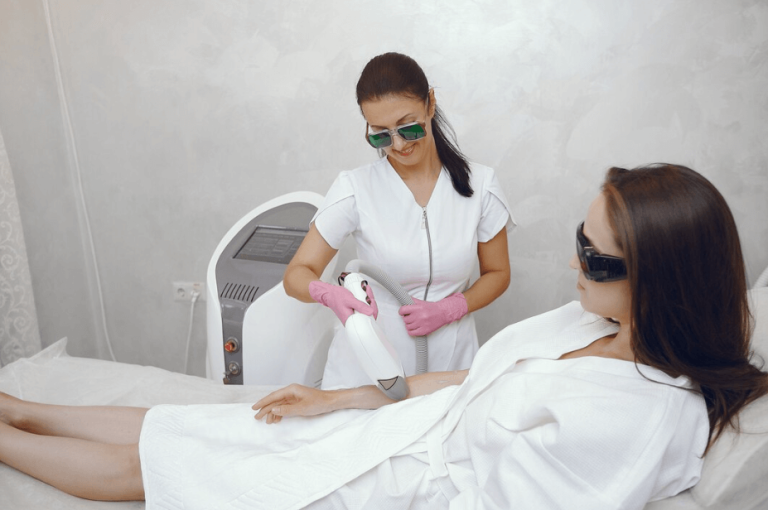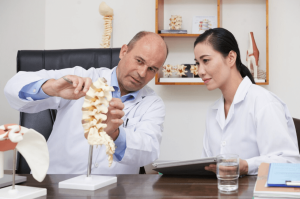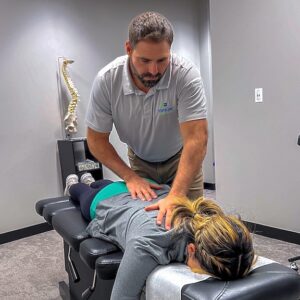Imagine your body as a symphony, with each cell and tissue playing its part to create harmony. Now, picture cold laser therapy near me as the conductor, guiding and harmonizing these elements to alleviate pain and promote healing.
But how does this remarkable therapy actually work? How does it reduce inflammation, stimulate cellular healing, and relieve pain?
In this discussion, we will explore the science behind cold laser therapy, uncover its mechanisms of action, and shed light on its potential benefits.
So, get ready to discover the fascinating world of cold laser therapy and how it can bring relief to those seeking a natural, non-invasive approach to pain management and healing.
The Basics of Cold Laser Therapy
If you’re curious about the fundamentals of cold laser therapy, you’ve come to the right place. Cold laser therapy is a non-invasive treatment that uses low-level laser light to alleviate pain and promote healing in various conditions. This therapy is also known as low-level laser therapy (LLLT) or photobiomodulation.
The mechanism behind cold laser therapy involves the use of specific wavelengths of light that penetrate the skin and interact with the cells. These photons of light stimulate the cells, triggering a series of physiological responses. The laser light helps to increase blood flow to the affected area, which promotes the delivery of oxygen and nutrients essential for healing. Additionally, cold laser therapy stimulates the production of adenosine triphosphate (ATP), the energy currency of cells, which aids in the repair and regeneration of damaged tissues.
One of the key benefits of cold laser therapy is its ability to alleviate pain. The laser light helps to reduce inflammation and swelling, which are often the root causes of pain. By targeting the source of pain, cold laser therapy provides relief without the need for medication or invasive procedures.
Furthermore, cold laser therapy accelerates the healing process. It promotes the production of collagen, a protein essential for tissue repair. This results in faster wound healing and a reduction in scar tissue formation.
Understanding the Science Behind It
Now let’s dive into the science behind cold laser therapy and how it works to alleviate pain and promote healing.
Cold laser therapy, also known as low-level laser therapy (LLLT), utilizes a device that emits low-intensity laser light. This light, often in the red or near-infrared spectrum, penetrates the skin and targets the affected area.
The science behind cold laser therapy lies in its ability to stimulate cellular activity. When the cold laser light interacts with the cells, it promotes the production of adenosine triphosphate (ATP), which is the energy source for cellular processes. This increase in ATP production enhances cellular metabolism and promotes the healing process.
Furthermore, cold laser therapy also stimulates the production of endorphins, which are natural pain-relieving chemicals in the body. These endorphins help to alleviate pain and reduce inflammation in the treated area.
In addition to ATP production and endorphin release, cold laser therapy also improves blood circulation in the targeted area. This increased blood flow delivers essential nutrients and oxygen to the cells, further enhancing the healing process.
How Cold Laser Therapy Reduces Inflammation
Cold laser therapy reduces inflammation by targeting the affected area with low-intensity laser light, which stimulates cellular activity and promotes the release of natural pain-relieving chemicals in your body. When you undergo cold laser therapy, the laser light penetrates deep into your tissues, reaching the site of inflammation. This light energy is absorbed by the cells, triggering a series of biochemical reactions that lead to reduced inflammation.
One way cold laser therapy reduces inflammation is by increasing blood flow to the affected area. This increased circulation brings more oxygen and nutrients to the tissues, helping to remove waste products and reduce swelling. Additionally, the laser light stimulates the production of nitric oxide, a molecule that dilates blood vessels and improves blood flow.
Cold laser therapy also activates the mitochondria, the powerhouses of your cells. This activation leads to an increase in cellular metabolism, which helps to accelerate the healing process. The laser light stimulates the production of adenosine triphosphate (ATP), the energy currency of the cells. This increase in ATP production enhances cellular repair and regeneration, promoting healing and reducing inflammation.
Stimulating Cellular Healing With Cold Laser Therapy
By stimulating cellular healing, cold laser therapy harnesses the power of low-intensity laser light to promote tissue repair and reduce inflammation. This therapy works by targeting the affected area with a specific wavelength of light, which is absorbed by the cells. This absorption triggers a series of biological reactions that lead to pain relief and promote healing.
When the low-intensity laser light interacts with the cells, it stimulates the production of adenosine triphosphate (ATP). ATP is the energy currency of the cells and is essential for cellular processes, including tissue repair. The increased ATP production enhances the cells’ ability to heal themselves, accelerating the healing process.
Furthermore, cold laser therapy also stimulates the release of nitric oxide, a molecule that plays a crucial role in cellular communication and blood flow regulation. Nitric oxide promotes vasodilation, increasing blood flow to the affected area. This increased blood flow brings essential nutrients and oxygen to the tissues, aiding in the healing process and reducing inflammation.
The stimulation of cellular healing through cold laser therapy has shown promising results in various conditions, including chronic pain management. By promoting tissue repair and reducing inflammation, this therapy provides a non-invasive and drug-free approach to pain relief and healing.
The Role of Cold Laser Therapy in Pain Relief
Using targeted low-intensity laser light, cold laser therapy plays a significant role in relieving pain caused by various conditions. By specifically targeting the affected area, the cold laser stimulates cellular healing and promotes the release of endorphins, which are natural pain-relieving hormones in the body. This therapy has been proven effective in reducing pain associated with musculoskeletal injuries, arthritis, and nerve damage.
Cold laser therapy works by penetrating the skin and reaching deep into the tissues. The laser light interacts with the cells, increasing their metabolic activity and promoting the production of ATP, which is essential for cellular function and repair. This increased energy production accelerates the healing process and reduces inflammation, leading to pain relief.
One of the major advantages of cold laser therapy is its non-invasive nature. Unlike traditional pain relief methods, such as medication or surgery, cold laser therapy doesn’t require incisions or the ingestion of potentially harmful substances. It’s a safe and painless procedure that can be used in conjunction with other treatments or as a standalone therapy.
Whether you’re suffering from chronic pain or recovering from an injury, cold laser therapy offers a non-invasive and effective solution for pain relief. By targeting the root cause of the pain and promoting healing at the cellular level, this therapy can alleviate pain and improve your quality of life.
Cold Laser Therapy and the Nervous System
Cold laser therapy has a significant impact on the functioning of the nervous system. When undergoing cold laser therapy, the laser emits low-level light energy that penetrates the skin and interacts with the cells in the body. This interaction stimulates the production of ATP, or adenosine triphosphate, which is the energy currency of cells.
The nervous system plays a crucial role in processing pain signals and regulating the body’s healing response. Cold laser therapy promotes healing by reducing inflammation, increasing blood flow, and stimulating the release of endorphins, which are the body’s natural painkillers.
By targeting specific points on the body, cold laser therapy can directly affect the nerves and nerve endings. This stimulation can help to alleviate pain by interrupting the pain signals being sent to the brain. Additionally, cold laser therapy can help to regenerate damaged nerves and improve nerve function.
Furthermore, cold laser therapy has been shown to have a calming effect on the nervous system. It can reduce anxiety and stress, allowing the body to enter a state of relaxation that’s conducive to healing.
Targeting Specific Areas for Treatment
When targeting specific areas for treatment in cold laser therapy, the focus shifts to addressing the specific sources of pain or injury in your body. This targeted approach allows for more effective and efficient treatment of chronic pain and facilitates better pain management overall. By using cold laser therapy to target specific areas, you can alleviate pain and promote healing in a more precise and targeted manner.
One of the key benefits of cold laser therapy is its ability to target specific areas of the body that are experiencing pain or injury. This allows for a more concentrated treatment approach, ensuring that the affected area receives the necessary therapeutic benefits. By directly targeting the source of pain or injury, cold laser therapy can help to alleviate pain and promote healing more effectively.
Cold Laser Therapy for Sports Injuries
For athletes seeking effective and efficient treatment options, cold laser therapy offers promising results in the management of sports injuries.
Cold laser therapy, also known as low-level laser therapy (LLLT), uses specific wavelengths of light to stimulate healing and reduce pain. It’s a non-invasive and drug-free treatment that has gained popularity among athletes due to its ability to promote healing and accelerate the recovery process.
Sports injuries can range from minor sprains and strains to more severe conditions such as ligament tears and fractures. Regardless of the type of injury, cold laser therapy can be used to alleviate pain and expedite the healing process.
The laser light penetrates deeply into the tissues, stimulating cellular activity and increasing blood flow to the injured area. This promotes the delivery of oxygen and nutrients to the damaged tissues, aiding in their repair and regeneration.
One of the key benefits of cold laser therapy for sports injuries is its ability to reduce inflammation. Inflammation is a natural response to injury, but excessive or prolonged inflammation can delay the healing process and prolong pain. Cold laser therapy helps to modulate the inflammatory response, reducing swelling and promoting a faster recovery.
Moreover, cold laser therapy can also help athletes manage pain associated with their injuries. By stimulating the release of endorphins, which are natural pain-relieving chemicals in the body, cold laser therapy can provide immediate relief from pain. It can also help athletes reduce their reliance on pain medications, which can have adverse side effects and hinder the healing process.
Cold Laser Therapy for Chronic Pain Conditions
Many individuals suffering from chronic pain conditions find relief through cold laser therapy. Cold laser therapy is a non-invasive treatment that uses low-level laser beams to alleviate pain and promote healing. This innovative treatment has shown promising results in treating a wide range of chronic pain conditions.
Chronic pain is a persistent condition that can greatly impact a person’s quality of life. It can be caused by various factors such as injury, inflammation, or nerve damage. Traditional treatments for chronic pain often involve medications that may have side effects or invasive procedures that carry risks. Cold laser therapy offers a safe and effective alternative.
During a cold laser therapy session, the low-level laser beams are applied directly to the affected area. The light energy penetrates the skin and is absorbed by the cells, stimulating the production of ATP, the energy source for cellular repair. This increased energy production promotes healing and reduces inflammation, which in turn alleviates pain.
Cold laser therapy has been proven to be effective in treating chronic pain conditions such as arthritis, fibromyalgia, neuropathy, and back pain. Many patients report significant pain reduction and improved mobility after undergoing cold laser therapy. The treatment is non-invasive, painless, and has no known side effects, making it a popular choice for individuals seeking long-term relief from chronic pain.
The Potential Side Effects of Cold Laser Therapy
Before undergoing cold laser therapy, it’s important to be aware of the potential side effects that may occur. Although cold laser therapy is generally considered safe, there are a few possible side effects to keep in mind. It’s crucial to discuss these potential risks with your doctor before starting treatment.
One potential side effect of cold laser therapy is skin irritation or redness at the treatment site. This is usually temporary and should resolve on its own. In some cases, patients may also experience mild discomfort or a tingling sensation during the treatment, but this is generally well-tolerated.
Another rare side effect is an increase in pain or inflammation after the treatment. This can occur as the body responds to the therapy and begins its healing process. However, if you experience severe pain or worsening symptoms, it’s important to notify your doctor immediately.
It is also worth mentioning that cold laser therapy may not provide immediate relief for chronic pain conditions. It may take several sessions before you start noticing improvements in your symptoms. Therefore, it’s important to have realistic expectations and continue working closely with your doctor to manage your pain effectively.
In conclusion, cold laser therapy is a promising treatment option for pain relief and promoting healing. By reducing inflammation and stimulating cellular healing, it can effectively target specific areas and treat various conditions, including sports injuries and chronic pain.
While it has shown positive results, it’s important to be aware of potential side effects. Overall, cold laser therapy Rockford offers a non-invasive and potentially effective solution for those seeking pain relief and improved healing.
Why Choose Us?
Uncover a new era of healing at Evolve Chiropractic of Rockford, where innovation meets wellness. We take pride in being your go-to destination for cold laser therapy, conveniently located near you. Our mission is to provide a holistic approach to health, and our dedicated team of chiropractors is committed to guiding you on your journey to optimal well-being.
Cold laser therapy is at the heart of our services, offering a non-invasive and highly effective solution for a range of health concerns. Whether you’re seeking relief from pain, recovering from an injury, or looking to enhance your body’s natural healing abilities, our skilled practitioners at Evolve Chiropractic are here to support you.
2606 Broadway #1a, Rockford, IL 61108, United States
(815) 397-7259
https://myevolvechiropractor.com/chiropractor-in-rockford-il





